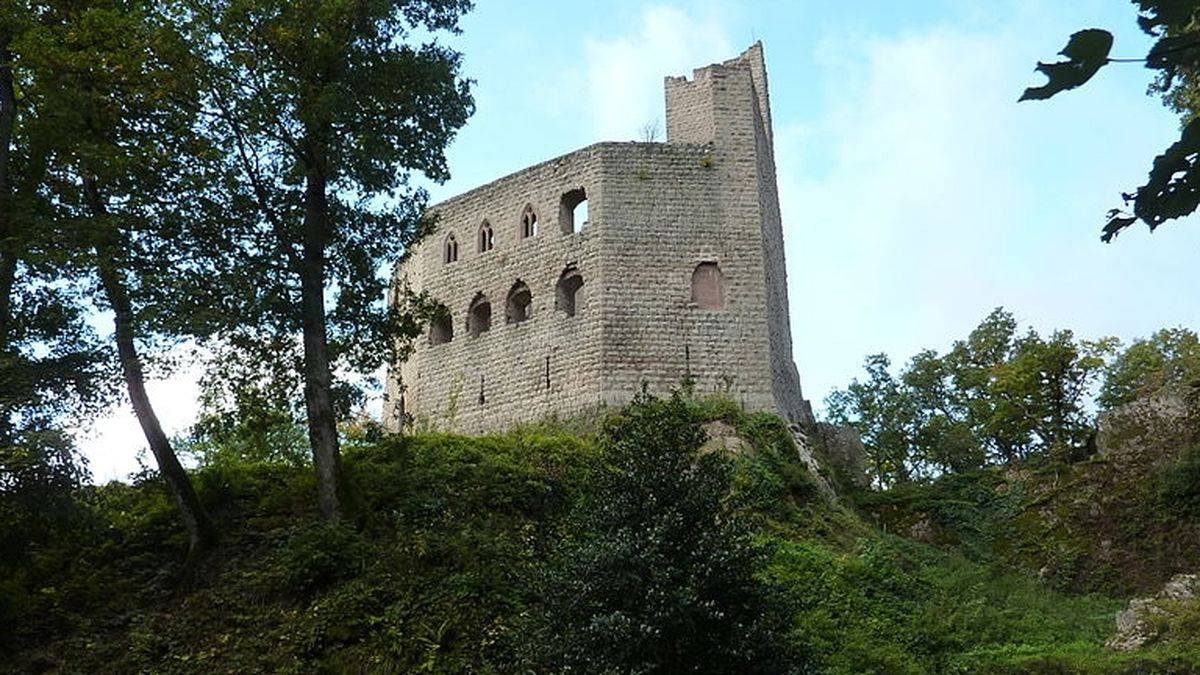 The castle | ©Chris06 / CC-BY-SA
The castle | ©Chris06 / CC-BY-SAThe woodpecker’s fortress
The De Dicka
Among all the fortresses which used to protect convent of Mont Sainte-Odile, we have the castle of Spesbourg. A family raised it in the 13th century: the de Dicka…
The story began with this old family from Germany, the Von Dicke. They turned up in Alsace in 1244, for the election of canon Henri de Dicka to the episcopate of Strasbourg.
So, Henri brought his brother Alexandre with him in Alsace and appointed him governor of Andlau.
Alexandre soon raised a stronghold to keep an eye on Andlau abbey, in 1248: the place became Spesbourg...
Vulture and crow
We don’t know exactly: where does this name of Spesbourg come from?
Several hypothesis: from spachen (″keeping an eye″) or from specht (″woodpecker″)?
So, the Spesbourg would be… the woodpecker’s castle! This little bird is very common in Vosges forests…
But it was not the only Alsatian castle who get a bird name: Falkenstein was the ″hawk’s castle″, Girsberg ″the vulture’s mount″ and Ramstein the ″crow’s rock″...
A castle on its rock
The de Dicka died out with Alexandre’s grand-grand-son, Walter. He passed away with other Alsatian lords in battle of Sempach (a slaughter), in July 1386.
Walter was childless, so he gave the castle to the family d’Andlau, few years before his death. They kept it until the beginning of the 19th century!
The end is near!
Belonging in 1444 to bailiff of Ebermunster, Lazare d'Andlau, the Spesbourg was damaged during the Thirty Years War, by the Swedish occupation.
In 1700, bishop of Strasbourg owned the castle and the neighbouring forests: one century later, the fortress was already in ruins but fell to the Hallez, a family from Flanders.
The visit of Spesbourg
With his 25 metres high keep and lovely Gothic windows, we easily imagine the past of this castle: a past made of luxury and unequaled splendour, nested at 460 metres high!
It’s an octagon flanks by deep ditches and vertiginous precipices (brr). A nice stroll, back to the Middle Ages!
